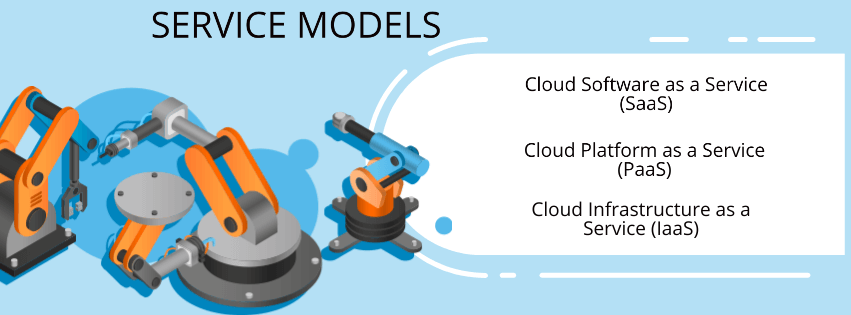Let’s start by defining cloud computing. It is a model of providing convenient network access in the “on-demand” mode to a collectively used set of configurable computing resources (for example, networks, servers, data storages, applications and/or services) that the user can quickly use for his tasks and release when Minimizing the number of interactions with the service provider or your own management efforts. This model aims to increase the availability of computing resources and combines five key features, three service models, and four deployment models.
Cloud Computing Features:
-
Self-catering (if needed)
The consumer, when s/he needs it, can independently use computing capabilities, such as server time or network storage, in automatic mode, without interacting with the personnel of the service provider.
-
Wide availability over the Internet
Features are available through the network – access to them is based on standard mechanisms, which ensures the use of heterogeneous thin and thick client platforms (for example, mobile phones, laptops, PDAs).
-
Pooling Resources
The supplier combines its computing resources in a pool to serve a large number of consumers, using the principle of multiple leases (Multi-tenancy). Various physical and virtual resources are dynamically allocated and redistributed according to user needs. There is a feeling of independence from the location when the customer does not know and does not control exactly where the computing resources that he uses are located, but maybe he can determine their location at a more abstract level (for example, country, region, or data center). Examples of resources can be data storage, computing power, RAM, bandwidth, virtual machines.
-
Ability to adapt quickly
Computing capabilities can be quickly and flexibly backed up (often automatically) for operational scaling to customer needs, and can also be quickly released. From the consumer’s point of view, the opportunities available often look unlimited and can be purchased in any quantity at any time.
-
Measurable service
Cloud systems automatically control and optimize the use of resources through the measurement of some abstract parameters. Parameters vary depending on the type of service. For example, it can be the size of the data warehouse, processing power, bandwidth, and/or the number of active user records.
Service Models:

We reveal only the first service model as related to the topic of this work. Software as a Service (SaaS) is providing consumers with the ability to use vendor applications that operate on a cloud infrastructure. Applications are accessed from various client devices through a thin client interface, such as a web browser. The consumer does not control and does not manage the cloud infrastructure on which the application is running, including the network, servers, operating systems, data warehouses, and even application settings. A possible exception is the individual user settings of the application.
Deployment Models:
-
Private Cloud
-
Community cloud
-
Public cloud
-
Hybrid cloud
Software is like entropy: It is difficult to grasp, weighs nothing, and obeys the Second Law of Thermodynamics; i.e., it always increases.
Norman Augustine
Public Cloud (Public Cloud) – in this model, the cloud infrastructure is available to everyone or a wide industry group and is owned by the cloud service provider. Based on the foregoing, we give the following definition. Cloud services for small companies are business automation applications distributed under the SaaS model (software as a service) through the Public Cloud and available to a wide range of customers at an affordable price.



